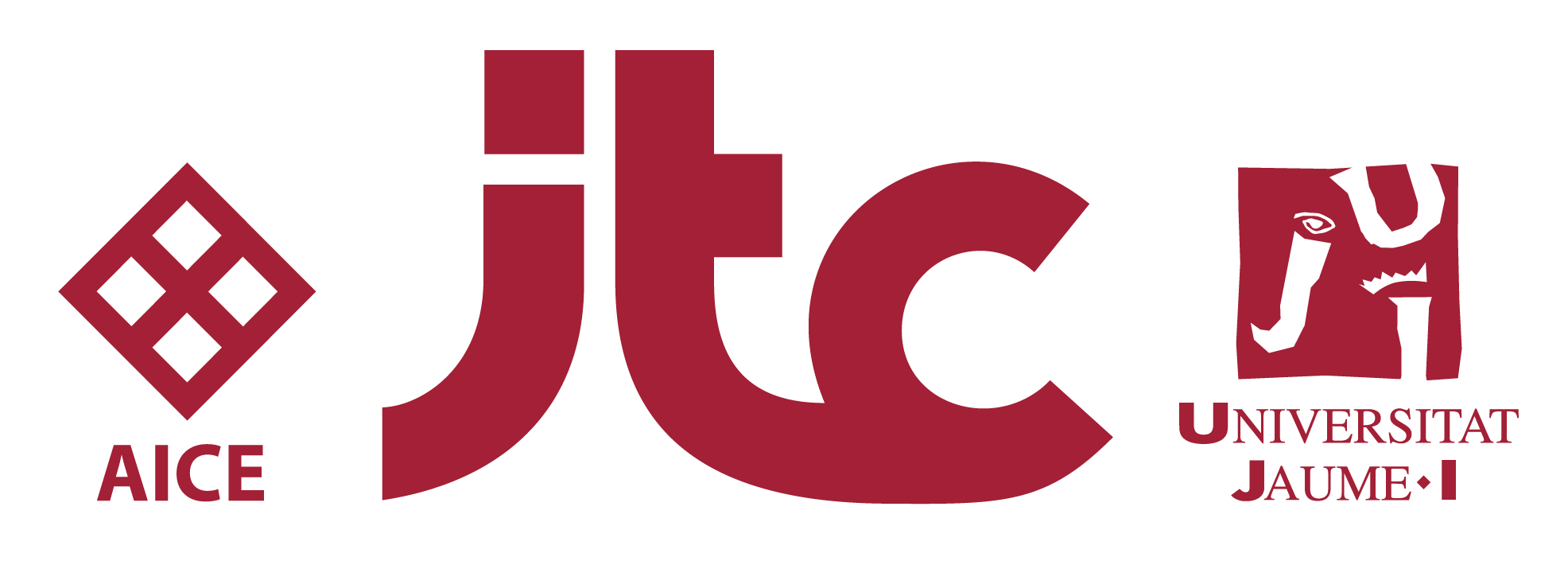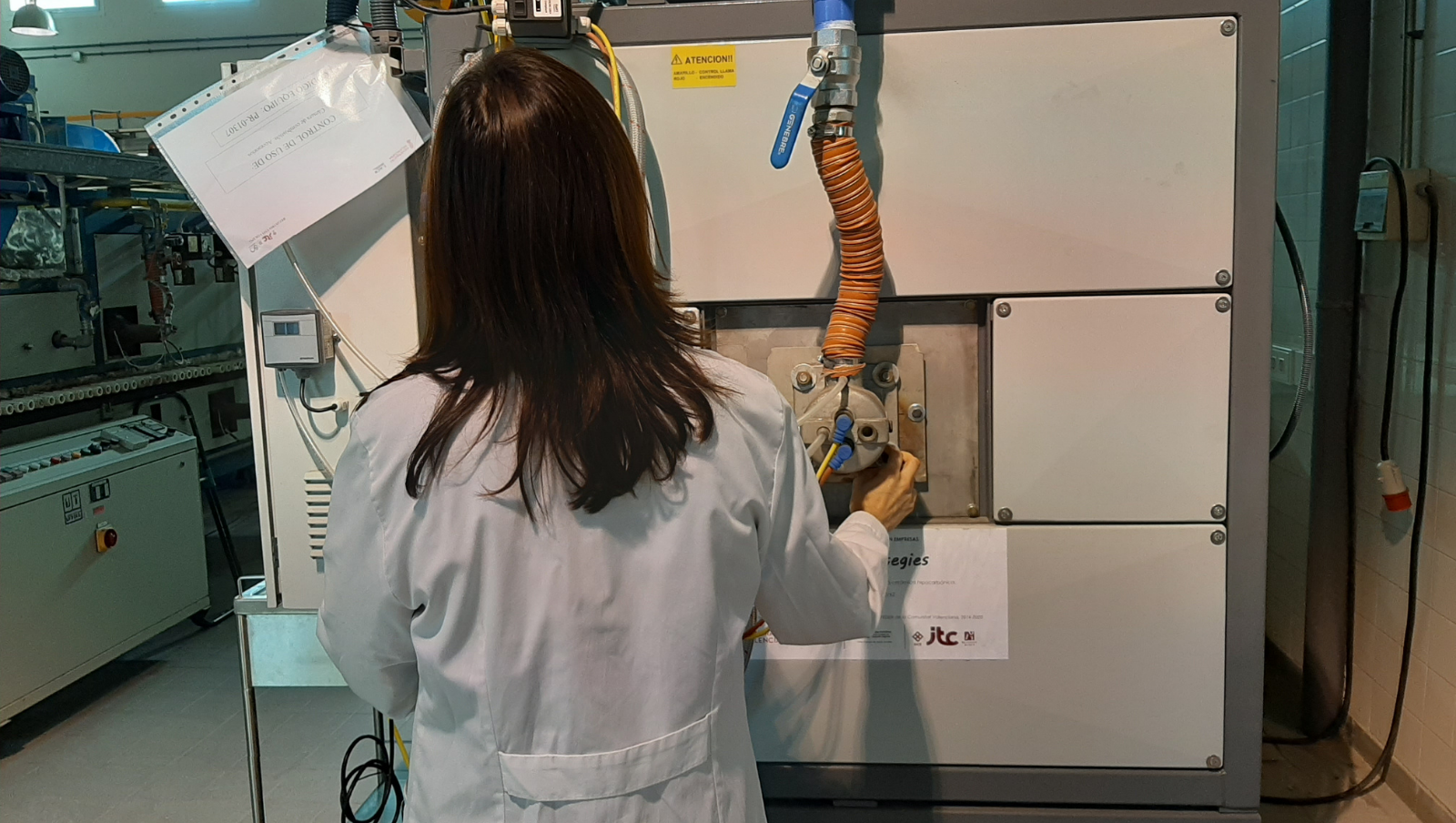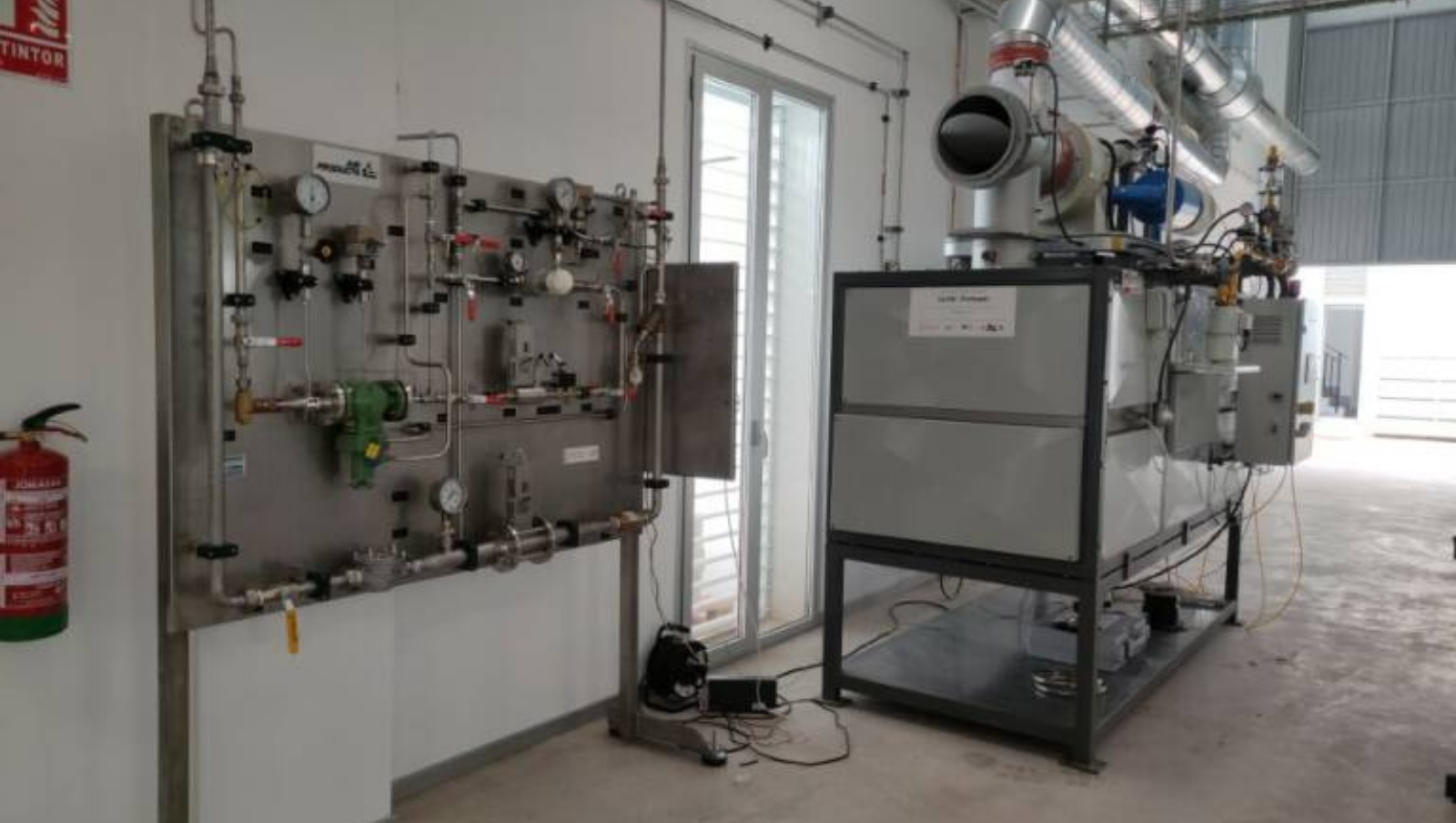The ceramic tile industry is an energy-intensive industry, mainly in terms of natural gas consumption, with a total consumption of 16,000 GWh/year. The level of CO2 emissions in the cluster reaches 3,350,000 tCO2/year, approximately 90% of which come from the combustion of natural gas. In this context, the European Green Pact proposes a 55% reduction in emissions compared to 1990 by 2030 and zero emissions by 2050.
Con estos objetivos de reducción de emisiones tan ambiciosos, el sector deberá modificar radicalmente las tecnologías utilizadas en su proceso productivo. Entre las opciones existentes destaca el empleo de Hidrógeno como fuente directa de energía térmica por combustión, en los procesos de secado y cocción. La gran ventaja de este proceso es que su combustión sólo produce vapor de agua, y si la energía para su producción es de origen renovable, su emisión asociada de CO2 es muy reducida, con una emisión directa nula, y por tanto de gran interés para alcanzar los objetivos de descarbonización previstos.
No obstante, el uso de hidrógeno como combustible en procesos industriales requiere de un estudio en detalle para conocer la influencia que la atmósfera gaseosa resultante del uso de hidrógeno como combustible ejerce sobre las reacciones físico-químicas que van a sufrir los materiales procesados.
En este estudio se presentan los resultados obtenidos en un horno tubular de temperatura controlada, diseñado para estudiar la influencia de la atmósfera del horno sobre el comportamiento en la cocción de tres tipos de soportes cerámicos (azulejo, gres y gres porcelánico). Para ello, se han obtenido las curvas de sinterización de estos materiales utilizando siete mezclas gaseosas modificando la proporción de N2, O2 y H2O. Los resultados se interpretan basándose en la influencia que tienen estos gases sobre la viscosidad de la fase vítrea y sobre las reacciones redox de algunos óxidos metálicos.
This project is supported by the Generalitat Valenciana, through the Instituto Valenciano de Competitividad Empresarial (IVACE) through the Nominative line.




